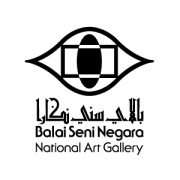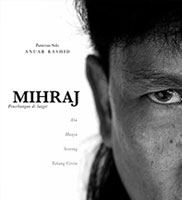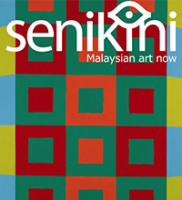CURATOR NOTES:
In 2010, Valentine Willie Fine Art had published a book documenting the works of of Yee-I-Lann, written by Beverly Yong and Adeline Ooi entitled Fluid World. The publication had also covered The Horizon series with a statement by Yee I-Lann, entailing her feelings and fascination with the subject of horizon when she was staying in Australia and how it affects the series.
In her statements, Yee I-Lann (2003) had noted that the main difference she felt in Australia was its space, she was fascinated by the openness of the South Australian outback, something that she felt visually captivating, different from the perspective at home, here, she noted the horizon line is clear and as she moves the skies followed suit. Back home, her fascination with it inspire her to create a series that depicts the horizon as a main theme.
In the same page noted Kuala Lumpur 2003, she talks about the creation of the piece, where she had used the beauty of the Australian horizon line in composition with with local subjects on culture and society that concerns her. Through the series of work, she had tries to bind the fragmented issues in her mind, the uncertainties she has on local dillema and context, made clearer through the expression of the work, manifested with her newfound visual obsession and processing the ideas and issue pertaining her society at home.
BACKGROUND
Yee I Lann was born in 1971, Sabah she had produced various self expressive works that circulate on the contemporary ideas of malaysian identity. She is well known through her powerful visuals and interplay of contextual photography & photo manipulations, I Lann’s work highlight her subjects in cognition with her view on the multicultural nation state of Malaysia in her own expression and visual rendition.
Among the collection of work within the National Art Gallery, are her Horizon series, the collection of 2/40 C-Prints edition of series titled A Small Town At The Turn of The Century, and her collaborative installation work, Through Rose Colored Glasses with Mr. Tam Hong Lam of Pakard Photo Studio, Melaka, alongside her Vintage series.
Reference:
Fluid World: Yee I-Lann. Adeline Ooi & Beverly Yong Valentine Willie Fine Art. 2010.



















